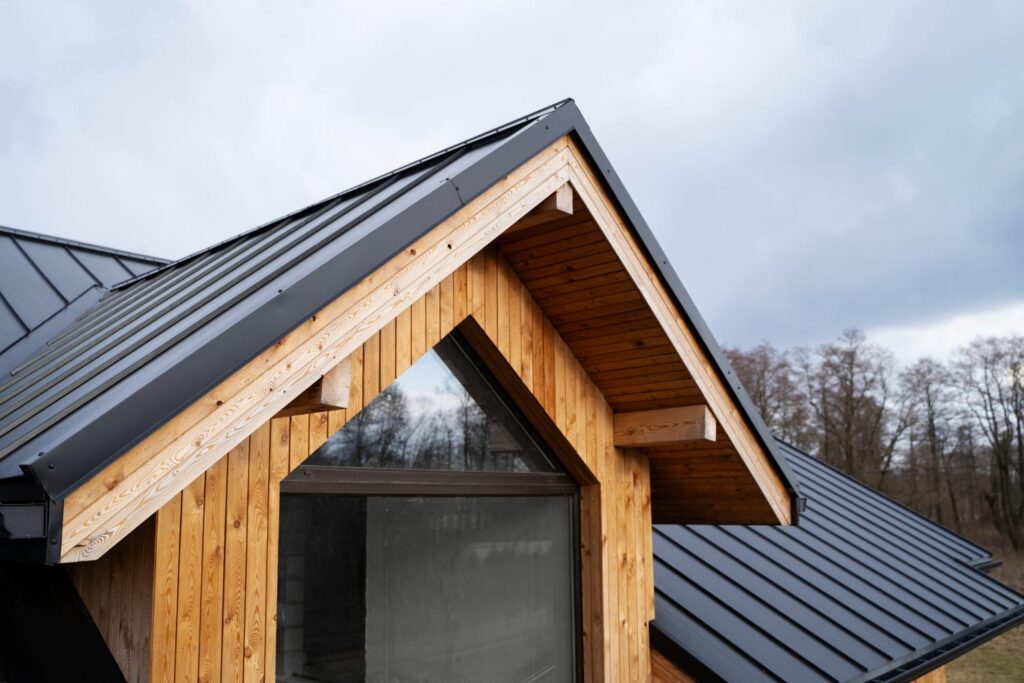Let’s be honest—most people don’t spend a lot of time thinking about their attic. It’s that weird space above your head where you store old boxes, maybe a Halloween skeleton, and pretty much forget about. But there’s one small feature up there that actually does more than you’d think: the gable end vent.
Thank you for reading this post, don't forget to subscribe!You’ve probably seen one without realizing it. It’s that vent up near the peak of the roof on the side of a house, usually shaped like a triangle, square, or even a little circle. It’s not there for looks. It’s there to keep your attic from turning into a sweat lodge—or worse.
So, What’s It Do?
In short, a gable end vent helps your attic breathe.
Here’s how it works: heat rises. Always has. And when the sun beats down on your roof all day, that attic of yours heats up like crazy. If the hot air has nowhere to go, it just sits there—baking your insulation, warping wood, and pushing that heat down into your living space.
Then there’s moisture. In the colder months, warm, damp air from inside the house drifts up into the attic. When that hits the colder roof surface, it can condense into water. That water gets into your wood, your insulation, and before long—you’ve got mold, rot, or worse.
A gable end vent is a simple way to stop all that. It lets hot air out and brings fresh air in. No wires. No motors. Just good old-fashioned airflow.
Where You’ll Find Them
If your house has a pitched roof—like most older homes or classic suburban builds—you probably have gable end vents. They’re usually installed on both ends of the attic, high up on the wall that forms the triangle under the roof.
Some houses use them alone, but a lot of modern builds mix them with soffit vents (under the eaves) and ridge vents (along the peak of the roof). That combo creates a nice flow of air: cool air in down low, hot air out up top.
But even on their own, gable vents do a decent job—especially if they’re installed on opposite ends so air can move through the attic like a breeze through an open barn.
Do They Always Work?
They work, sure. But they work best in attics that are fairly open—no big walls or blocked-off sections getting in the way. If your attic is chopped up into smaller areas, air doesn’t flow as well, and you might need more venting elsewhere.
Another thing: gable vents rely a bit on wind. If the wind’s blowing against one end of the house, it helps push air in one vent and out the other. No wind? Then they rely more on warm air rising, which still works, just not as fast.
So yeah, they’re helpful—but not magic. Think of them as part of the system, not the whole solution.

Materials and Styles
Gable vents come in all kinds. Some are basic metal or vinyl grilles. Others are fancy, with wood trim and decorative shapes. Some homeowners paint them to match the siding. Others make them stand out.
Here’s what matters more than the look:
-
Screens to keep out birds and bugs
-
Louvers to block rain from blowing in
-
Durability, especially if you live where storms hit hard
Wood vents look great, but they can rot if you don’t keep up with paint or sealer. Vinyl’s cheap and low maintenance, but not as tough. Metal is strong but can rust without a good finish. Pick what fits your climate and your house.
Don’t Forget Maintenance
It’s easy to forget those vents are even up there. But they do need a quick check once in a while.
Here’s what to watch for:
-
Dust or debris clogging the louvers
-
Bird nests or wasp hives tucked inside
-
Cracked caulking around the edges
-
Rot or rust, especially on older wood or metal vents
A simple once-a-year walk-around—maybe in spring or fall—is all it takes. Clean out the junk, make sure nothing’s broken, and you’re good to go.
Size Matters (Really)
You can’t just stick a tiny vent up there and hope for the best. If your attic’s big, you’ll need more vent area.
The basic rule: one square foot of vent for every 150 square feet of attic floor space. That includes both intake (like soffits) and exhaust (like your gables). If you’ve got no soffits and only gables, you’ll want to get as close to that number as you can just with the vents.
And make sure they’re high up near the roof peak. That’s where the hot air gathers.
Some Common Goofs
Here’s what folks mess up sometimes:
-
Covering the inside of the vent with insulation. Kills airflow. Don’t do it.
-
Using just one vent on one end of the attic. Doesn’t let air move through.
-
Decorative vents that don’t actually open to anything—purely cosmetic.
-
Mixing vent types without a plan, which can mess up air movement instead of helping it.
Best move? If you’re adding or replacing vents, talk to someone who knows attics. It’s not always as simple as it looks.
Final Word
Gable end vents aren’t fancy. They don’t buzz or light up or need Wi-Fi. But they’ve been doing their job for decades—quietly letting hot air and moisture out of attics across the country.
If your house has one (or should have one), give it some credit. It’s one of those small details that can make a big difference over time. Lower energy bills, longer-lasting roofs, and fewer headaches down the line.
And all it takes is a little opening in the right spot, letting your house breathe the way it’s supposed to.



